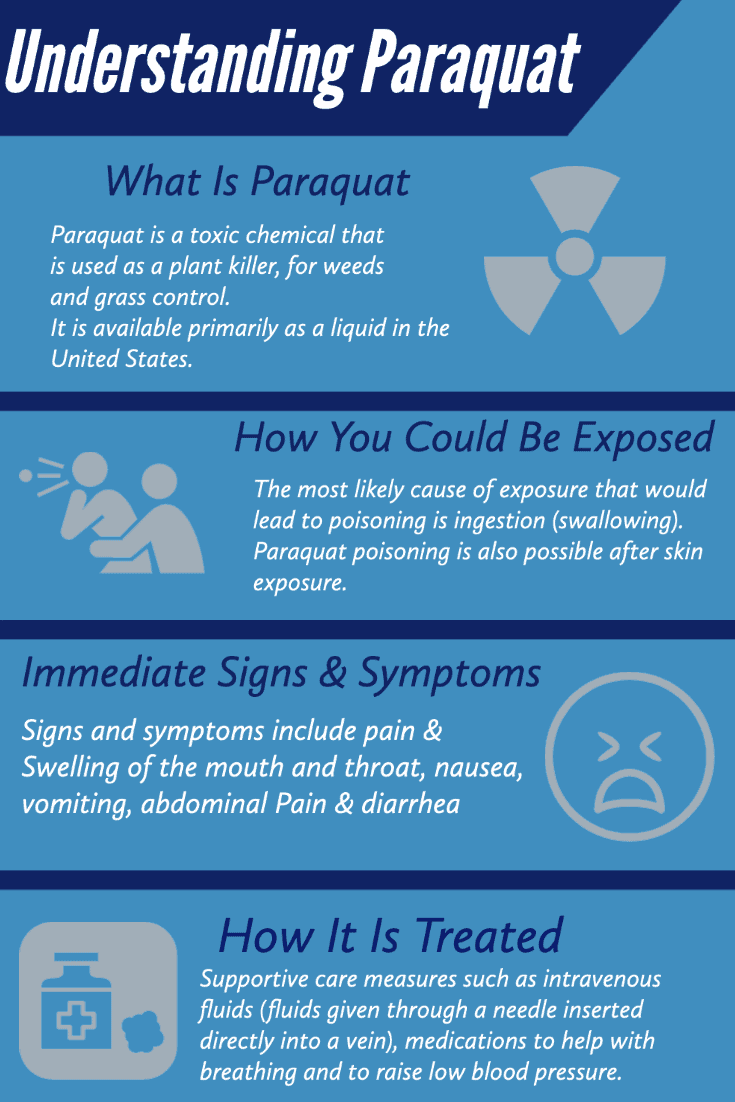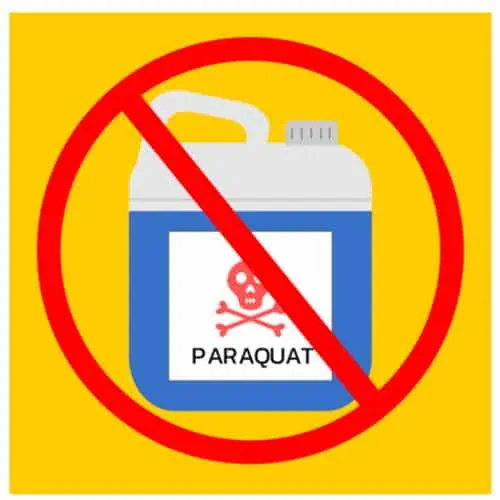- Last Updated: October 10th, 2024

Attorney Sean T. Keith has been a personal injury lawyer for 30+ years, a nationally recognized Top 100 Trial Lawyer, and top car accident lawyer & motor vehicle accident lawyer in Arkansas.
Legally Reviewed
This article has been written and reviewed for legal accuracy and clarity by the team of writers and attorneys at Keith Law Group and is as accurate as possible. This content should not be taken as legal advice from an attorney. If you would like to learn more about our owner and experienced injury lawyer, Sean T. Keith, you can do so here.
Fact-Checked
Keith Law Group does everything possible to make sure the information in this article is up to date and accurate. If you need specific legal advice about your case, contact us. This article should not be taken as advice from an attorney.
Sean Keith's Accollades & Practice Areas He Specializes In
- Over $20 Million recovered in Medical Device Injury Lawsuits.
- Over $13 Million recovered in Car Accident Lawsuits and other Motor Vehicle Accident Lawsuits.
- Over $100 Million recovered in total on behalf of clients.
- Sean represents clients in cases involving personal injuries, car accidents, motorcycle accidents, truck accidents, wrongful death, slip and falls, nursing home abuse cases, nursing home elopement cases, and more.
Paraquat Lawsuit Overview
Paraquat Dichloride, a toxic chemical used by agricultural workers to kill plants and weeds, has been linked to health risks including Parkinson’s Disease.
Paraquat Lawsuits filed against the manufacturers and distributors of the toxic herbicide are currently underway.
If you’ve been diagnosed with Parkinson’s disease after being exposed to Paraquat, you may be eligible to file a Paraquat lawsuit and seek financial compensation for your medical bills, lost income, and other damages related to your condition.

Contact Keith Law Group for a free consultation.
You can also use the chatbot on this page to find out if you qualify for the Paraquat Lawsuit instantly.
At Keith Law Group, we are dedicated to representing individuals harmed at no fault of their own.
Our Paraquat Attorneys have decades of experience helping people secure the compensation they are owed.
Contact our Paraquat Lawyers at (479) 326-7734 to learn more and to find out if you’re eligible to join the Paraquat Lawsuits.
Table of Contents

Lawsuit Updates
-
July 13, 2023 Update:
In our July 2023 update, our founding partner, Sean Keith, addresses common questions about the ongoing Paraquat litigation.
He discusses the potential claims against the manufacturers of this toxic chemical, Paraquat, which has been linked to Parkinson’s disease.
Sean also covers the legal process, the duration it might take, and what happens to your claim if you pass away.
Furthermore, Sean explains how to prove your case and where it might be filed.
To save you some time, here are the key points discussed in our video covering the most common questions about the Paraquat Lawsuit:
- Paraquat, also known as Gramoxone or Firestorm, is a toxic chemical used in agriculture and has been linked to Parkinson’s disease.
- If you’ve been exposed to Paraquat from 1962 to the present and developed Parkinson’s, you may qualify for a claim against the manufacturers.
- The legal process can take anywhere from three (3) to five (5) years, and in some cases, even longer.
- If a claimant passes away, their claim doesn’t disappear but goes to their estate.
- Evidence such as personal testimony and work history is crucial in proving a case.
- The location of case filing depends on various factors, including where you live.
- For further inquiries or to determine if you qualify for a Paraquat case, you can use our website chat to find out if you qualify in as little as 60 seconds.

-
April 16, 2021 Update:
In our April 2021 update for the Paraquat Lawsui, we delve into the serious health hazards associated with Paraquat, a toxic chemical primarily used as an herbicide.
We discuss how prolonged exposure to Paraquat, whether through ingestion or skin absorption, can lead to the development of Parkinson’s disease.
We also highlight the ongoing lawsuits against companies responsible for the manufacture and distribution of Paraquat and related products.
We encourage those who have suffered due to Paraquat exposure to join the legal action and potentially receive compensation for their medical bills, lost health, and reduced income.
To save you some time, here are the key points discussed in our video covering Paraquat lawsuits:
- Paraquat is a toxic chemical primarily used as an herbicide.
- Prolonged exposure to Paraquat can lead to the development of Parkinson’s disease.
- There are ongoing lawsuits against companies responsible for the manufacture and distribution of Paraquat.
- Victims of Paraquat exposure are encouraged to join these lawsuits to potentially receive compensation for their medical bills, lost health, and reduced income.

What is the Paraquat Lawsuit?
The Paraquat lawsuit refers to legal action taken by individuals who have been harmed by the herbicide Paraquat.
Paraquat Lawsuits generally allege that the manufacturers of Paraquat failed to adequately warn consumers of the risks associated with the herbicide, including the increased risk of developing Parkinson’s disease.
The Paraquat Exposure Lawsuit has been consolidated into multidistrict litigation (MDL).
The Paraquat MDL centralizes all Paraquat Lawsuits into one District Court to speed up the legal process and ensure adequate settlements across given cases.
The first Paraquat Lawsuit was filed on Oct. 6, 2017 against Growmark and Syngenta (Paraquat manufacturers).
Chevron Chemical was later added as another defendant.
The Paraquat MDL is not a class action lawsuit.
In the Paraquat MDL, a potential settlement will be awarded to plaintiffs based on the details each of their cases.
In a class action lawsuit, settlements are divided evenly amongst all claimants.
This means that if you are suffering from Paraquat exposure and Parkinson’s Disease, you have a better chance at securing an adequate and significant settlement.
Do I Qualify to File a Paraquat Lawsuit?
If you have been exposed to Paraquat and have been diagnosed with Parkinson’s disease or another serious health condition, you may be eligible to file a Paraquat lawsuit.
It is important to consult with an experienced lawyer who can evaluate your case and help determine if you have a valid claim.
The Paraquat Lawyers from Keith Law Group are here to discuss your legal options and help you file a Paraquat Lawsuit.
If you’ve developed Parkinson’s Disease after being exposed to Paraquat, it’s important that you retain all evidence relevant to your case such as medical bills, doctor’s notes, employment information, residential information, and more.
Why You Should Hire an Experienced Paraquat Lawyer
An experienced Paraquat lawyer can help you navigate the legal process and ensure that your rights are protected.
Your Paraquat Attorney can help you gather any evidence you are having trouble securing, assess and calculate your damages, file paperwork, and negotiate on your behalf.
Additionally, they can provide you with the guidance and support you need during this difficult time, and help you achieve the best possible outcome for your case.
It is crucial to choose a lawyer who has experience with Paraquat lawsuits and a proven track record of success.
Paraquat Parkinson’s Disease Lawsuit: Current Status of the Paraquat Litigation
New Paraquat Lawsuits are being filed into the Paraquat Multidistrict Litigation (MDL) each month.
As of May 2023, over 3,000 Paraquat Lawsuits have been centralized into the MDL.
Bellwether trials are scheduled for this summer.
Bellwether trials will help to determine what the average Paraquat settlements could be.
Visit this page for more updates on the Paraquat Litigation and Paraquat Lawsuit settlements as they become available.
If you or a loved one have developed Parkinson’s Disease after being exposed to Paraquat, you may be eligible to file a Paraquat Lawsuit against the manufacturers (Syngenta and Chevron).
Contact Keith Law Group for a free consultation.
You can also use the chatbot on this page to find out if you qualify for a Paraquat Lawsuit instantly.
What Is Paraquat?
Paraquat is a highly toxic herbicide used to control weeds and grasses in a variety of crops.
It works by interfering with photosynthesis in plant cells, ultimately leading to their death.
However, paraquat is also highly toxic to humans and animals.
Paraquat exposure can cause a range of health problems, including respiratory distress, kidney failure, and liver damage.
Of particular concern is the link between paraquat exposure and an increased risk of developing Parkinson’s disease, a neurodegenerative disorder that affects movement and coordination.
Research suggests that paraquat may damage the cells in the brain responsible for producing dopamine, a neurotransmitter that is essential for normal movement.
In fact, studies have shown that individuals with Parkinson’s disease are more likely to have been exposed to paraquat than those without the condition.
Due to the serious health risks associated with paraquat, several countries have banned or restricted its use.
It is important for those who work with or around paraquat to take appropriate safety measures, such as wearing protective clothing and following proper handling procedures, to minimize their risk of exposure.
Banned In Countries Around The Globe
Once awareness grew about the ill health hazards involved with Paraquat exposure, attempts at a global phase-out started, with some success.
China reportedly suffers 5,000 Paraquat-related deaths each year, so it’s working towards a full ban on the substance.
The EU issued a complete ban of Paraquat in 2007 on the grounds that it was too dangerous for farmers, even if they were wearing protective equipment.
India, however, is a stalwart against a global ban.
Paraquat is currently banned in 32 countries around the world, including Switzerland where the manufacturer, Syngenta, is based.
Paraquat is still legal inside the United States, but it’s a heavily restricted substance that you have to have special permission or certification to buy.
Paraquat is Banned or Being Phased Out in the Following Countries:
- Austria
- Belgium
- Brazil
- Bulgaria
- Cambodia
- China
- Croatia
- Cyprus
- Czechia
- Denmark
- Estonia
- Finland
- France
- Germany
- Greece
- Hungary
- Ireland
- Italy
- Ivory Coast
- Kuwait
- Latvia
- Lithuania
- Luxembourg
- Malta
- Netherlands
- Poland
- Portugal
- Romania
- Slovakia
- Slovenia
- Spain
- Sweden
- Syria
- United Arab Emirates
Paraquat Exposure: Adverse Health Effects and Symptoms
There are immediate signs and symptoms of Paraquat exposure.
Swallowing and inhalation are the most likely form of ingestion, but high levels of direct exposure can lead to absorption through the skin.
Exposure through the skin can happen over long periods of time, or quickly if the version of Paraquat is highly concentrated, or it enters the body through skin that is broken from cuts, sores, or a serious rash.
Paraquat damage is direct if it impacts the lining of your mouth, intestines, or stomach.
Once inside your body, it can create toxic reactions throughout your kidneys, liver, and lungs.
Immediate symptoms of high-level ingestion include:
- Swelling and pain in the throat and mouth
- Gastrointestinal pain
- Bloody diarrhea
- Abdominal pain
- Vomiting and nausea
- Low blood pressure
- Electrolyte abnormalities
- Dehydration
Serious cases of Paraquat exposure often result in death within 30 days or less.
Even milder cases can result in lung scarring, and failure of the heart, kidneys, and lungs.
Parkinson’s disease is the focus of many Paraquat lawsuits.
As far back as 2009, the American Journal of Epidemiology showed that risk for Parkinson’s disease was elevated by 75 percent to homes within 1,600 feet of Paraquat exposure.
You don’t even have to use this in your own yard to be at risk if it’s used on crops around your area.
Paraquat and Parkinson’s Disease
Going back to 2011, the connection between Paraquat and the development of Parkinson’s Disease has been well documented.
In the 2011 study, known as FAME (Farmer’s and Movement Evaluation), the National Institute of Health pulled data from the Agricultural Health Project, which tracked more than 80,000 farmers, agricultural workers, and their spouses.
Of the 80,000, 115 self-reported as having been diagnosed with Parkinson’s Disease.
Out of this group, 110 reported that the herbicide they most frequently came in contact with was Paraquat.
While the manufacturer, Syngenta, argued that the results of this study were inconclusive, numerous other studies followed that further solidified the connection.

Parkinson’s Symptoms
Parkinson’s Disease is a progressive nervous system disorder that affects movement.
Sometimes symptoms start gradually with a barely noticeable tremor in just one hand.
While tremors are the most common symptom, Parkinson’s can also show itself with stiffness, slow movement, and slow or slurring speech.
Below is a list of Parkinson’s symptoms that affect motor skills.
If you have worked with herbicides in the past and are displaying any of these symptoms, contact your doctor as soon as possible:
- Tremors
- Bradykinesia
- Rigidity
- Instability when Standing Upright
- Gait Problems
- Soft, Slow, or Slurred Speech
Additionally, non-motor skill symptoms can include hearing or vision issues, depression, anxiety, psychosis, weight loss, fatigue, cognitive issues, sweating, and sleep problems.
Contact your doctor if you are displaying any of these symptoms.
Paraquat and Parkinson’s Disease Treatment Expenses
The potential for economic damage alone from Paraquat has been documented in several Paraquat Lawsuits.
The burden of care for Parkinson’s disease is at the heart of the matter.
It usually costs more than $25,000 per year to care for someone with this disease, resulting in a total economic hit across the country of more than $20 billion.
How Our Paraquat Lawyers Can Help You
The Paraquat Lawyers at Keith Law Group can help file a Paraquat Parkinson’s Disease Lawsuit on your behalf and seek financial compensation for your diagnoses and damages.
Hiring a Paraquat Lawyer from Keith Law Group costs nothing: we work on a contingency fee basis, which means we DO NOT charge for legal representation unless your Paraquat Lawsuit ends in a successful settlement of verdict.
Our Paraquat Attorneys do much more for you than you might imagine.
They won’t just give you a number and tell you to get in line.
They’ll work to find the right avenue to file your Paraquat Lawsuit based on your date and state of exposure.
They’ll also factor in whether or not your particular Paraquat lawsuit case is wrongful death or personal injury.
On top of finding the right strategy for your Paraquat case, our lawyers will analyze your medical records and healthcare documentation with the help of experts.
We’ll look to verify your injury due to Paraquat and ascertain its level of severity.
All of this will be added to the broader Paraquat Lawsuit case, helping your odds of securing an adequate Paraquat settlement.
What is the Difference Between the Paraquat MDL and the Paraquat Class Action Lawsuit?
Among non-lawyers, we see the terms of class action and multidistrict litigation (MDL) used interchangeably a lot.
There is certainly overlap between them, as they both represent large groups of plaintiffs.
In both situations, lawyers must go through substantial amounts of medical records, prove a consistent injury throughout the group, and then either negotiate a settlement or take the matter to trial.
Multidistrict litigation (MDL) and class action are two types of legal procedures used to handle cases involving multiple plaintiffs who have suffered similar injuries or damages caused by a common defendant.
MDL consolidates individual cases from multiple federal districts into one court for pretrial proceedings, such as discovery and motion hearings, while preserving each plaintiff’s right to a separate trial.
In contrast, class action combines individual claims into one lawsuit, in which one or several named plaintiffs represent a larger group of people with similar claims.
The main difference between MDL and class action is that in MDL, each plaintiff maintains their individual claim, while in class action, the outcome of the lawsuit is binding on all members of the class, whether they actively participated in the case or not.
Both MDL and class action can be effective ways to handle complex cases involving numerous plaintiffs, but the best approach depends on the specific circumstances of each case.
What Type Of Damages Can I Receive If My Paraquat Lawsuit Case Wins?
In general, you can win three kinds of different damages if your Paraquat lawsuit wins.
The potential damages to be claimed in a Paraquat Lawsuit include:
- Compensatory damages
- General damages
- Punitive damages
There might be enough overlap between the general and compensatory damages for them to be considered the same, as they are often just known as general compensatory damages.
Punitive damages are nearly always a distinct thing on and of themselves.
Compensatory Damages
Compensatory damages are the type of damages that most people identify with the most.
They’re also one of the more concrete types of damage that we see in the cases we work on.
These kinds of damages can include specific amounts for medical care, property damage, and lost income.
We work through documents we get access to during the process of litigation so we can seek out definitive amounts based on personal injuries.
General Damages
General damages often happen alongside compensatory damages.
These, however, are usually less tangible or specific.
They might cover things like loss of consortium, mental anguish, and pain and suffering.
They might even cover anticipated losses yet to happen, such as future medical care or a loss of any earning capacity.
Factors that come into consideration here include age, income, occupation, and how permanent and/or severe injuries are.
Punitive Damages
Punitive damages only happen to injured plaintiffs when an authoritative party deems a defendant’s wrongful behavior as particularly reprehensible or despicable.
These might be awarded when a judge or jury decides that a defendant has accorded themselves in a malicious or wanton manner.
Corporations deemed to have serious financial assets might be punished for harming a large group of people, which is certainly what we’re talking about here.
Contact Keith Law Group: Your Paraquat Lawyers
The health risks associated with Paraquat exposure are serious and life-threatening.
Many people with Parkinson’s Disease require serious medical treatment, and their quality of life is greatly diminished.
We understand the impacts Parkinson’s Disease from Paraquat exposure can have on a person’s life, and we’re prepared to represent you in a Paraquat Lawsuit filed against the manufacturers and distributors of the toxic herbicide.
If you or a loved one have been exposed to Paraquat and subsequently diagnosed with Parkinson’s Disease, you may be eligible to file a Paraquat Parkinson’s Disease Lawsuit and secure financial compensation for what you’ve gone through.
Families of victims who have passed away after suffering from Paraquat exposure may also be eligible to file a Paraquat Lawsuit for wrongful death on their behalf.
Contact Keith Law Group for a free consultation to discuss your legal options.
You can also use the chatbot on this page to find out if you qualify for the Paraquat Lawsuit instantly.
We at Keith Law Group have decades of experience helping people secure the compensation they are rightfully owed for what they’ve gone through.
Victims of Paraquat poisoning incidents are encouraged to contact us to see if they qualify for legal action.
Frequently Asked Questions
-
What are the Average Paraquat Settlement Amounts?
Each Paraquat Lawsuit is different.
Every person’s experience with the herbicide is taken into consideration when preparing and filing their Paraquat Lawsuit.
Also, in the Paraquat MDL, settlements are determined by the facts of each person’s case.
Unlike a class action lawsuit, where a large settlement is distributed evenly, each person involved in the Paraquat MDL would receive a settlement based on individual factors.
With this in mind, potential Paraquat settlement could be in the range of $10,000-$200,000+.
These estimations are by no means a guarantee of financial compensation for your Paraquat Lawsuit.
They are only an estimation based on previous Paraquat settlements and other lawsuits involving toxic chemical exposure.
-
Which countries is Paraquat banned in (or currently being phased out of)?
Paraquat is currently Banned or Being Phased Out in the following thirty-four (34) Countries:
- Austria
- Belgium
- Brazil
- Bulgaria
- Cambodia
- China
- Croatia
- Cyprus
- Czechia
- Denmark
- Estonia
- Finland
- France
- Germany
- Greece
- Hungary
- Ireland
- Italy
- Ivory Coast
- Kuwait
- Latvia
- Lithuania
- Luxembourg
- Malta
- Netherlands
- Poland
- Portugal
- Romania
- Slovakia
- Slovenia
- Spain
- Sweden
- Syria
- United Arab Emirates
-
What is the Statute of Limitations for Paraquat Lawsuits?
Paraquat injuries are usually under the purview of personal injury lawsuits.
The time you have to file a Paraquat lawsuit is usually determined by the state laws where you were personally injured.
If you have a set amount of time, that period starts with the date of your actual initial injury, be it ingestion, inhalation, or direct exposure.
Having said that, there are exceptions in some states for when the injury didn’t become immediately apparent to you, and that would be the date where your time to file a claim starts.
If you live in Tennessee, Kentucky, or Louisiana, then you only have one year.
If you’re a resident of North Dakota or Maine, then you get six years.
Most other states fall in the range of two to three years, with exceptions.
Given how complex all of this is, it makes sense to give us a call at Keith Law Group to find out where you fall in all of this.
Practice Areas
- 3M Earplug
- Belviq
- Bladder Sling
- Camp Lejeune Water Contamination
- Defective Medical Device
- Hernia Mesh
- Hip Replacement
- NEC Infant Formula
- Medtronic Insulin Pump
- Paraquat
- Philips CPAP
- Roundup
- Talcum Powder
- Tylenol Autism & ADHD
- Zantac
- Bicycle Accidents
- Boat Accidents
- Construction Accidents
- Dog Bite
- Drug Injuries
- Electric Shock Injuries
- Nursing Home Abuse
- Nursing Home Bedsore
- Nursing Home Falls
- Nursing Home Infection
- Nursing Home Sexual Abuse
- Personal Injuries
- Premises Liability
- Slip and Fall
- Traumatic Brain Injuries
- Wrongful Death
- 3M Earplug
- Belviq
- Bladder Sling
- Camp Lejeune Water Contamination
- Defective Medical Device
- Hernia Mesh
- Hip Replacement
- NEC Infant Formula
- Medtronic Insulin Pump
- Paraquat
- Philips CPAP
- Roundup
- Talcum Powder
- Tylenol Autism & ADHD
- Zantac
- Bicycle Accidents
- Boat Accidents
- Construction Accidents
- Dog Bite
- Drug Injuries
- Electric Shock Injuries
- Nursing Home Abuse
- Nursing Home Bedsore
- Nursing Home Falls
- Nursing Home Infection
- Nursing Home Sexual Abuse
- Personal Injuries
- Premises Liability
- Slip and Fall
- Traumatic Brain Injuries
- Wrongful Death
You pay
Nothing
unless we win
Do You Have A Case?
Related Articles

Choose Us For Your Personal Injury Case
- Available 24/7
- No Upfront Fees
- Free Case Evaluation
- No Fees Unless We Win!














